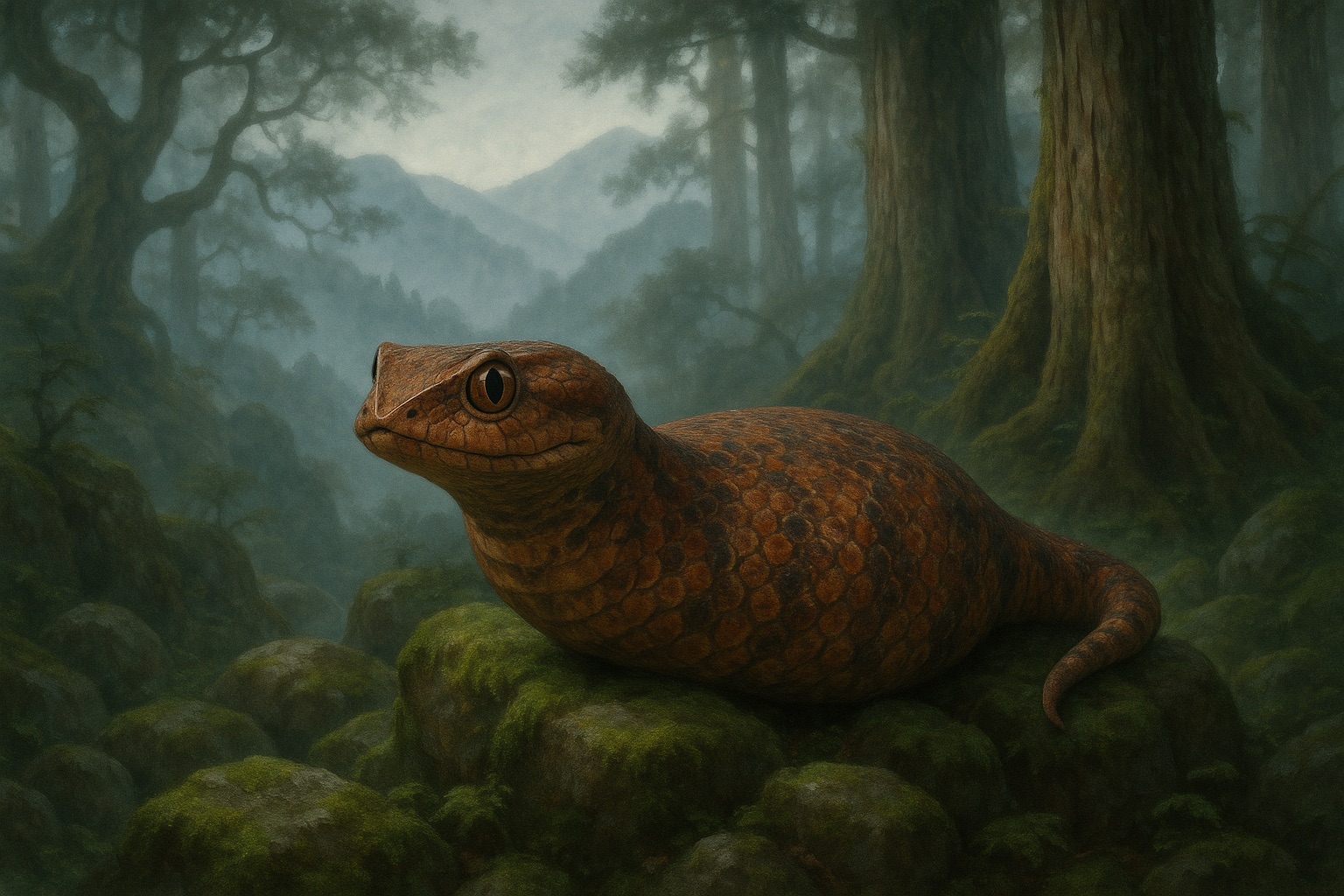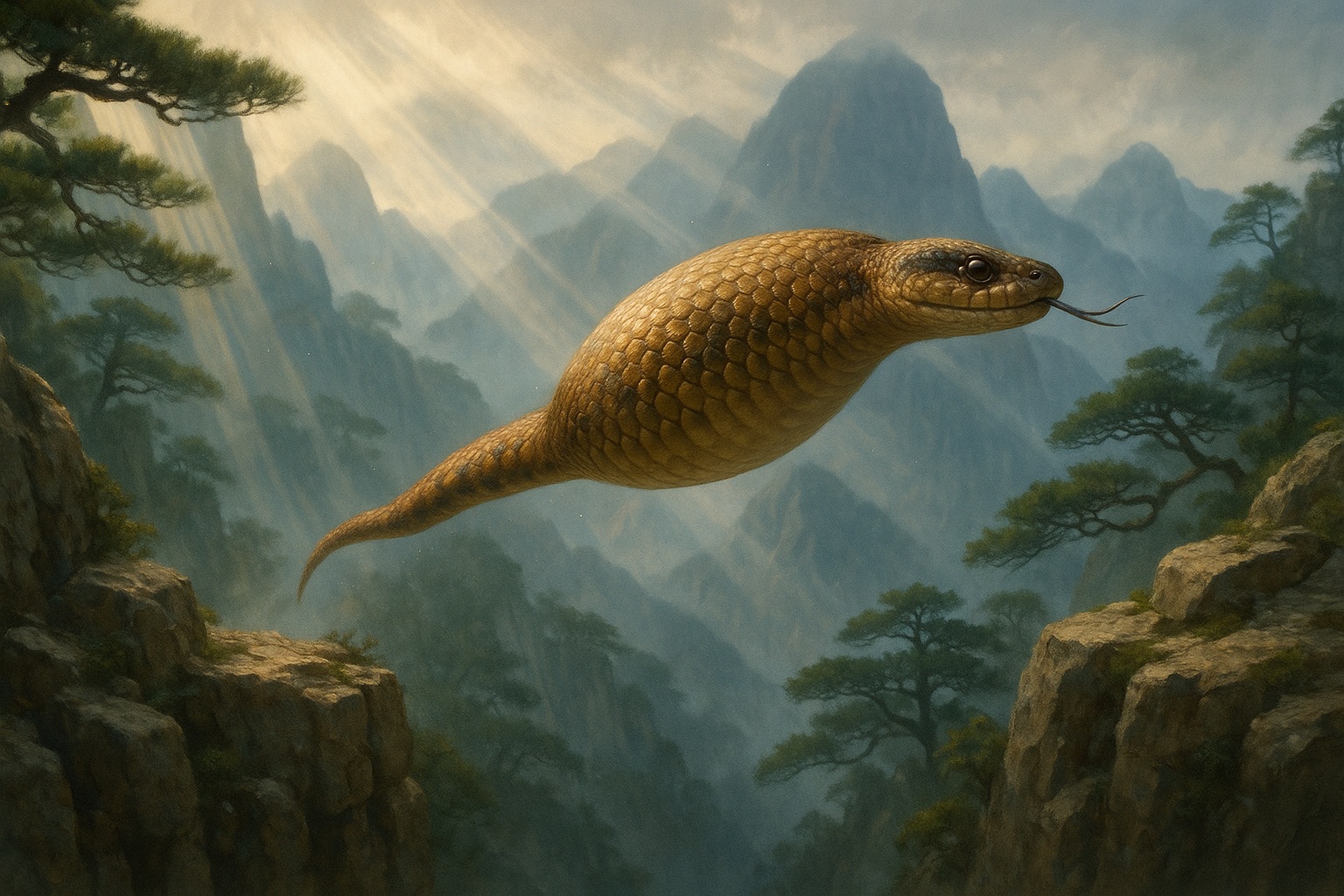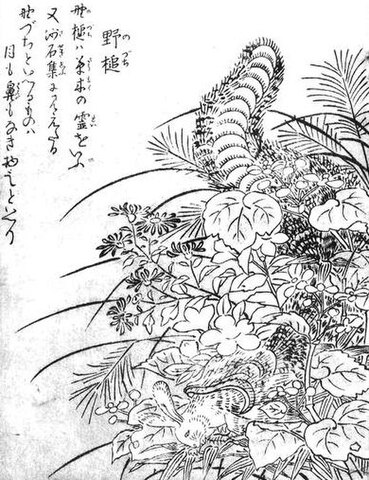Tsuchinoko: The Definitive Guide to Japan's Legendary Snake Monster and its $1 Million Bounty
Tsuchinoko: The Definitive Guide to Japan’s Legendary Snake Monster and its $1 Million Bounty

Deep in the mist-shrouded mountains of Japan, a creature of legend slithers between folklore and reality. It is not a dragon, nor a demon, but something far stranger: a short, impossibly fat snake with the body of a beer bottle, the face of a viper, and the ability to leap meters through the air. This is the Tsuchinoko, Japan’s most famous and enigmatic cryptid, a mystery woven into the nation’s history for centuries.
For generations, it has been a local myth, a pop culture icon, and the target of a nationwide hunt fueled by massive cash rewards. With countless eyewitness accounts, alleged ancient carvings, and a bounty reaching over a million dollars, the question persists: is the Tsuchinoko a real, undiscovered species, or one of the most elaborate and enduring hoaxes in cryptozoology? This is the definitive guide to the creature, the myth, and the ongoing hunt.

The Anatomy of a Legend: What is a Tsuchinoko?
The Tsuchinoko, whose name translates to “child of the hammer” for its mallet-like shape, defies every convention of a typical snake. While descriptions vary by region, a core set of bizarre characteristics has been reported with remarkable consistency across hundreds of sightings.
Unmistakable Appearance: Its body is short (30-80 cm) and strikingly thick in the middle, tapering abruptly to a small, pointed tail. The head is often described as triangular, like a viper’s, but with large, round eyes that possess a distinctly non-reptilian feature: eyelids. Its color ranges from rusty brown to dark gray, sometimes with mottled patterns.
Impossible Locomotion: The Tsuchinoko’s reported methods of movement are the stuff of legend. Witnesses claim it can inch forward like a caterpillar, roll sideways like a log, and even bite its own tail to form a hoop and roll away at astonishing speed. Most famously, it is said to possess an explosive jumping ability, capable of launching itself vertically or horizontally for several meters.
Peculiar Habits and Sounds: Folklore paints the Tsuchinoko as a creature of strange tastes and behaviors. It is said to be drawn to the smell of sake (Japanese rice wine) and even roasted hair. It allegedly snores loudly while sleeping and can emit a variety of sounds, from a sharp “chee” to a whistling “pyoo.” Some legends even warn that it possesses a deadly venom.

From Ancient Deity to Modern Monster Hunt
The Tsuchinoko is not a modern invention. Its story is deeply embedded in the cultural and historical fabric of Japan.
Ancient Origins: The creature’s roots may stretch back thousands of years. Carvings resembling the Tsuchinoko have been found on Jōmon period (c. 10,000–300 BCE) pottery and stone tools. It also appears in Japan’s oldest written chronicles, the Kojiki and Nihon Shoki (8th century CE), under the name Nozuchi, a deity of the fields and mountains.
Edo Period Documentation: By the 18th century, the Tsuchinoko was being documented as a real, if rare, animal. The illustrated encyclopedia Wakan Sansai Zue (1712) provided a detailed description, noting its hammer-like shape and its habit of rolling down hills.
The 20th-Century Boom: The Tsuchinoko exploded into a national phenomenon in the 1970s. This was largely thanks to the work of author Seiko Tanabe and a wildly popular manga by Takao Yaguchi, The Phantom Serpent Bachih_e_bi. Its fame was cemented when it appeared in the beloved manga Doraemon, introducing the creature to generations of children and solidifying its image in the public consciousness.
Today, the hunt for the Tsuchinoko is a serious—and lucrative—affair. Towns like Higashishirakawa in Gifu Prefecture have branded themselves as “Tsuchinoko hotspots.” They host annual festivals, maintain Tsuchinoko shrines and museums, and offer ever-increasing cash rewards for its live capture. As of 2024, the bounty in Itoigawa, Niigata, had reached a staggering 100 million yen (approximately $650,000 USD), with Higashishirakawa’s prize increasing yearly.

The Search for Truth: Is the Tsuchinoko Real?
Despite the enthusiasm and enormous bounties, no verifiable Tsuchinoko has ever been officially captured. The scientific community remains deeply skeptical, attributing the phenomenon to a combination of misidentification, folklore, and psychological factors.
The main rational explanations for Tsuchinoko sightings include:
1.A Snake After a Large Meal: The most common theory. A native snake, such as the venomous yamakagashi (tiger keelback), can look remarkably like a Tsuchinoko after swallowing large prey (like a frog or rodent) or when it is pregnant. This causes its midsection to bulge dramatically, fitting the classic description.
2.An Exotic, Escaped Pet: Some researchers believe the Tsuchinoko could be a non-native lizard with reduced or hidden legs, such as the Blue-tongued Skink or the Shingleback Skink from Australia. These reptiles have been popular as pets in Japan since the 1970s, and escaped individuals found in the wild match many aspects of the Tsuchinoko’s description. In fact, several “captured Tsuchinokos” have later been identified as these species.
3.The Death Adder Theory: The Australian Death Adder, a highly venomous snake with a naturally short, stout body, has also been proposed as a candidate, possibly arriving in Japan via imported timber or hay.
4.A Genuine Undiscovered Species: This is the most exciting and least likely possibility. Believers argue that the consistent eyewitness accounts, spanning centuries and vast geographical areas, point to a real, yet-unclassified, animal. Could a relict species of snake or a unique form of legless lizard have survived, perfectly adapted to Japan’s dense, mountainous terrain?

While the scientific evidence is lacking, the cultural evidence is overwhelming. The Tsuchinoko has inspired Pokémon (the creature “Dunsparce,” known in Japan as Nokocchi), appeared in video games like the Metal Gear Solid series, and remains a beloved icon of Japanese folklore.
Whether it’s a real animal, a collective memory, or an elaborate cultural fantasy, the Tsuchinoko represents the enduring power of mystery in a world that often feels fully explored. It reminds us that even in a nation as modern and technologically advanced as Japan, the mountains may still hold ancient, undiscovered secrets. And with a life-changing fortune waiting for the lucky captor, the hunt is far from over.
You might also like…
※ Unauthorized reproduction, video creation, and uploading of this article's content to YouTube, blogs, or other platforms is strictly prohibited.
Related Articles
Popular Series
This is the page for Tsuchinoko: The Definitive Guide to Japan’s Legendary Snake Monster and its $1 Million Bounty. Find the latest news about Folklore, Cryptid, Tsuchinoko and more on TOCANA - the paranormal news media that stimulates your curiosity
Urban Legends Latest Articles
The Definitive Guide to Japan's Scariest Urban Legends: From Kuchisake-Onna to Kisaragi Station
2025.10.20 23:00 Urban LegendsKunekune: The Definitive Guide to Japan's Terrifying, Twisting Field Monster
2025.10.19 23:00 Urban LegendsNNN Special Broadcast: The Definitive Guide to Japan's Lost, Lethal TV Broadcast
2025.10.14 23:00 Urban Legends



